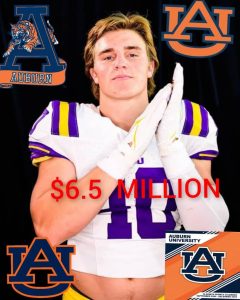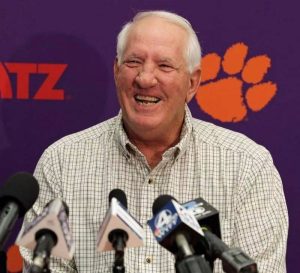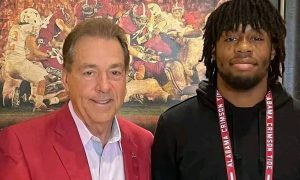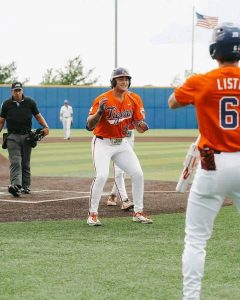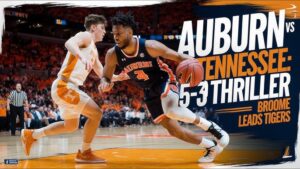
Wildcats Lose Offensive Line Addition to Transfer Portal Before Taking a Snap
Kentucky’s offseason rebuild along the offensive line took an unexpected turn this week when one of its newest additions announced his decision to re-enter the NCAA transfer portal, just months after committing to the Wildcats. The move is a surprising twist in a transfer cycle that had seemingly boosted Kentucky’s hopes of stabilizing its trenches ahead of the 2025 season. Now, with the loss of a key newcomer who hadn’t even played a down in blue and white, questions arise about depth, development, and how the Wildcats plan to respond in what has become a pivotal offseason.
The player, whose name had been included in early spring workouts and had appeared poised to compete for a starting role, entered the portal just as Kentucky’s staff was narrowing its focus on solidifying starting combinations. While he didn’t arrive with the most fanfare of the Wildcats’ transfer crop, he was viewed internally as a steady presence, capable of bringing size, maturity, and versatility to an offensive line that’s undergone significant turnover in recent years.
For Kentucky head coach Mark Stoops and offensive line coach Zach Yenser, this development is both untimely and disruptive. The Wildcats were deliberate in their approach to roster construction this cycle, prioritizing plug-and-play linemen from the portal to bridge the gap while younger prospects continued to develop. This lineman fit that vision perfectly—experienced enough to contribute immediately, but young enough to potentially be part of the program for multiple seasons.
He joined Kentucky after stints at a Group of Five school, where he had earned valuable playing experience, often going toe-to-toe with top defensive fronts. In his previous stop, he was lauded for his work ethic and leadership, attributes Kentucky hoped would carry over into the locker room as the Wildcats looked to recapture the identity that once made them a force in the SEC trenches.
Yet, despite early optimism, the transition to Lexington didn’t seem to fully materialize. Rumblings out of spring practice suggested that while he wasn’t struggling outright, he hadn’t necessarily stood out either. Competition along the offensive line has been fierce, with Kentucky bringing in multiple transfers to push the returning players and provide flexibility across the interior and tackle spots. It’s unclear whether the heightened competition played a role in his decision, but it wouldn’t be surprising. In today’s era of college football, where players can freely transfer and seek out more favorable depth chart scenarios, moves like this—while disappointing—are increasingly common.
Still, the departure stings. Offensive line continuity has long been a hallmark of the better Kentucky teams under Stoops. From the days of the “Big Blue Wall” led by NFL-caliber talents like Logan Stenberg and Drake Jackson, the Wildcats found success when their offensive line dictated the pace. Over the past two seasons, however, that edge has been missing. Injuries, inconsistent play, and a lack of depth exposed Kentucky’s front, making it difficult for the offense to establish any rhythm—particularly in the run game. That’s why this offseason was so important. The staff didn’t just want to restock the shelves—they wanted to rebuild an identity.
Now, one of those key building blocks is gone before the real work even began.
The loss also adds a layer of urgency to Kentucky’s plans for the second transfer portal window. Beginning this month, teams can again add new players from the portal, and offensive line will surely be a position of emphasis. Kentucky may now feel the need to pursue another veteran lineman, even if just to reestablish the depth chart balance they believed they had achieved heading into the summer. That could prove difficult. Quality linemen are always in high demand, and with fewer available than in the winter cycle, it will require a sharp recruiting pitch and some degree of fortune.
Fortunately, the Wildcats aren’t without options. They return several players with starting experience, including veterans who have grown within the program and younger talents who flashed potential in limited action last season. The goal will now be to solidify that group and keep competition alive, while possibly adding another face or two who can elevate the overall ceiling of the line. Leadership from returning captains and the steadiness of Coach Yenser’s approach will be critical as the group attempts to move past this hiccup.
Beyond the immediate personnel impact, this decision underscores a broader truth about modern roster management: continuity is no longer a given. In an era where transfers, NIL, and early playing time all factor into a player’s career decisions, coaching staffs must be more agile and adaptive than ever. For Kentucky, this means balancing long-term player development with short-term competitive needs—an increasingly delicate dance.
One thing the program has going for it is the culture Stoops has built. Even amid roster changes and shifting expectations, Kentucky has remained a resilient program, capable of retooling on the fly. The Wildcats have also shown an ability to identify and develop under-the-radar linemen, something that could come in handy again this offseason.
The timing of the move, just after spring practice, suggests that this wasn’t a rash decision, but rather one made after a full evaluation of his place within the program. Perhaps he saw the writing on the wall regarding his role, or maybe personal reasons played a part. Either way, the door now swings open for another player to seize an opportunity—and in that sense, Kentucky’s offensive line room will remain one of the most competitive and watched position groups heading into fall camp.
From a fan perspective, this kind of development may feel jarring, especially after months of buildup around the portal additions. But it also serves as a reminder of how fluid the landscape has become. Teams build, adjust, and sometimes rebuild again—often within the same offseason. The key is how programs respond. For Kentucky, that means recalibrating quickly and reinforcing the message that opportunities still exist for those willing to earn them.
It’s also worth noting that not every transfer works out the way either side hopes. While this case may be frustrating from the Wildcats’ point of view, it’s not necessarily an indictment on their evaluation or recruiting process. These situations are often complex, and what looks like a good fit on paper doesn’t always translate into a lasting relationship on the field or in the locker room.
The most immediate question is whether Kentucky will look externally to replace the departing lineman, or whether they feel confident that someone already in the building can step up. The answer may come in how the staff approaches the next few weeks. If offers start going out to other portal linemen, the writing will be clear. If not, it might signal trust in the development pipeline.
For now, though, the Wildcats will move forward one man short of their original plan. It’s not a devastating blow, but it’s a disruption to an area that desperately needed stability. Kentucky still has the potential to field a much-improved offensive line in 2025, and if the rest of the group stays healthy and continues to grow, this offseason blip could soon be forgotten.
Still, the departure serves as a subtle but important reminder that nothing is guaranteed—not even the arrival of a player who once seemed poised to help right away. As the summer workouts begin and the calendar inches closer to another season, the Wildcats must once again adapt, refocus, and ensure that what they lost is made up for in determination, chemistry, and perhaps, another late addition.
